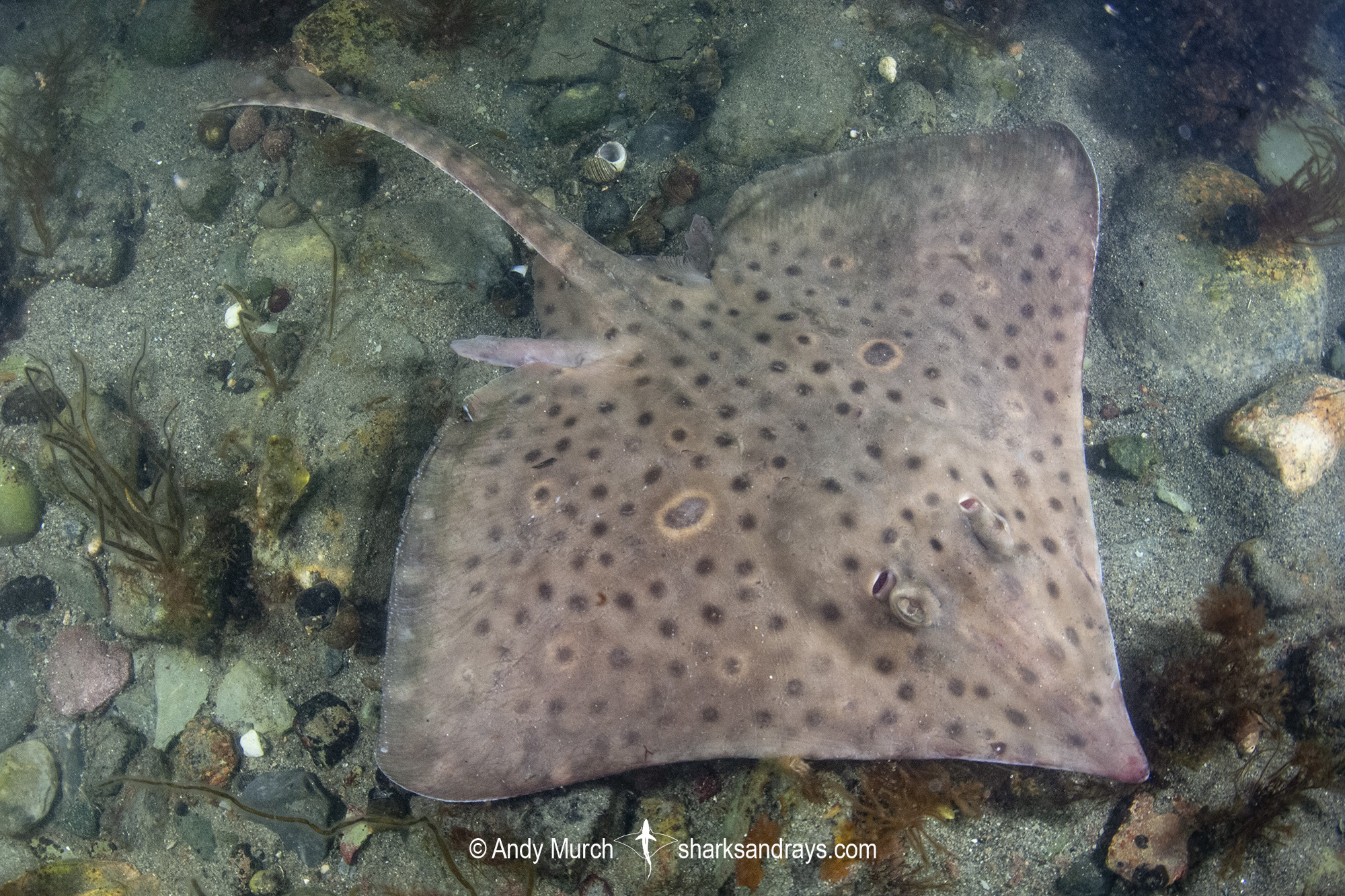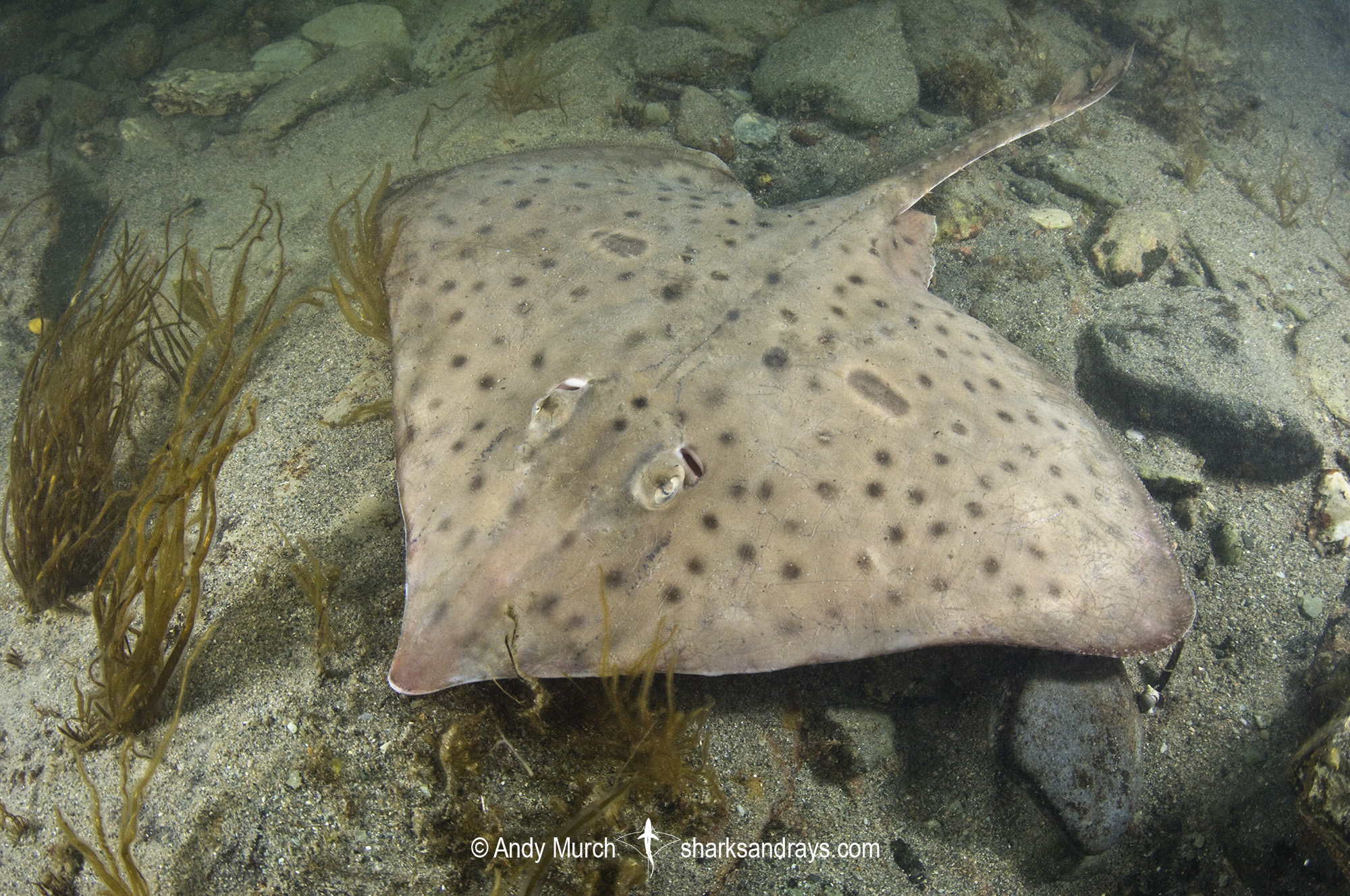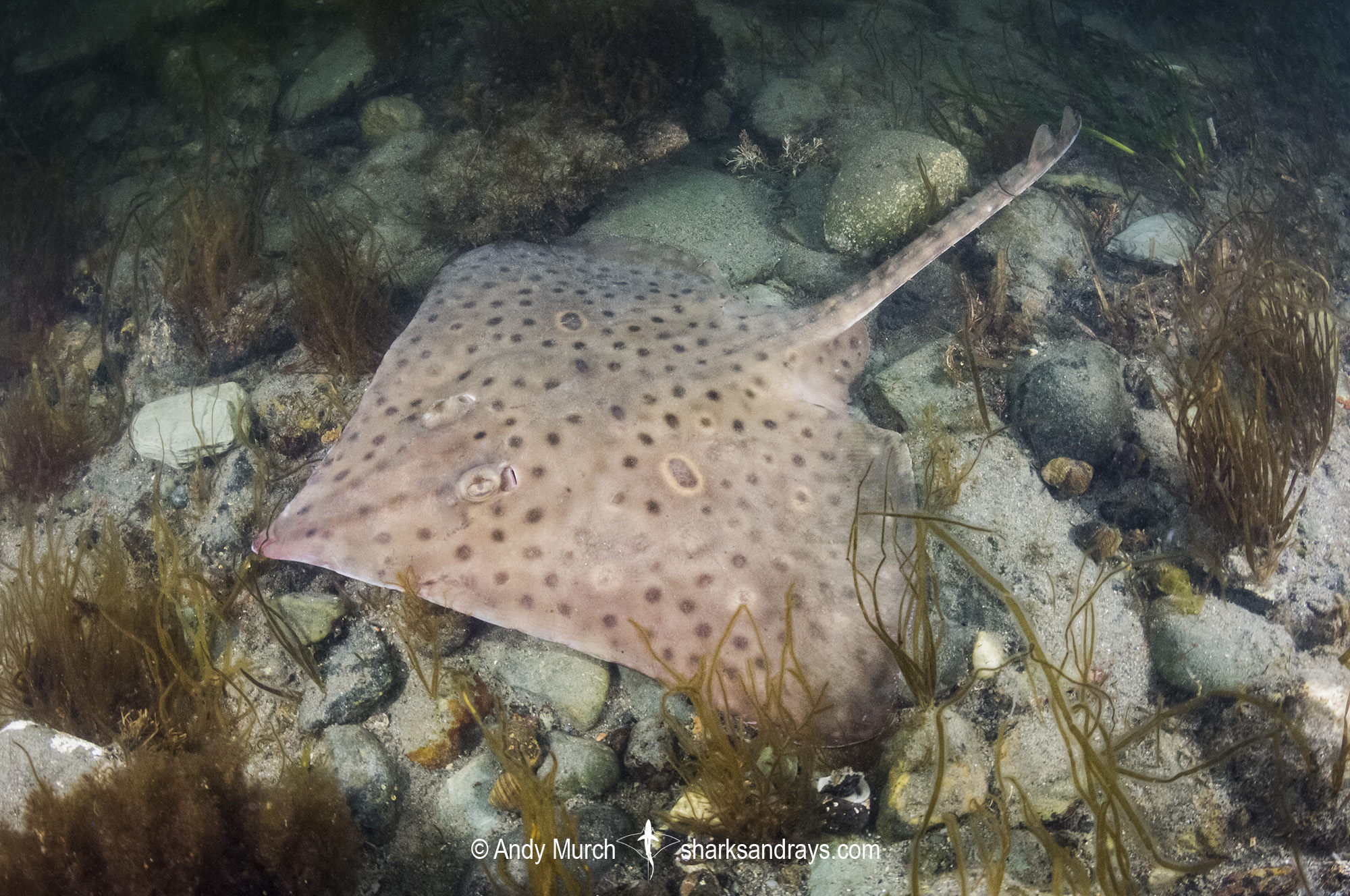Common names
Barndoor Skate.
Binomial
Dipturus laevis.
Synonyms
Raia granulata, Raia stabuliforis, Raja laevis.
Identification
A very large skate with a wide kite-shaped disc. Disc width 1.3 x disc length. Snout long with a right-angular or slightly acutely angular tip. Snout length 3.6 x orbit length. Anterior margins of pectoral fins slightly concave. Pectoral apices narrowly rounded. Disc covered in coarse denticles but with very few thorns. Small orbital thorns present in juveniles. Median row of 22-40 thorns from tail base to first dorsal fin. Thorns also present laterally on tail. Tail slender, length sub-equal to pre-cloacal length. Pelvic fins large and deeply notched. Anterior pelvic lobe slightly shorter than posterior lobe. Dorsal fins broadly rounded and slightly separated.
Colour
Dorsum grey-brown to pinkish-brown with numerous, evenly distributed, roughly eye-sized, dark spots sometimes with pale, diffuse outer rings. One, dark, oval ocellus with a pale outer ring, in the centre of each pectoral fin. Ventrum dusky, darker near disc and pelvic margins.
Size
Maximum length 163cm. Length at hatching 18-19cm.

Conservation Status
LEAST CONCERN
Due to intense fishing pressure in the 1960s and 1970s, the Barndoor Skate was almost completely exterpated, undergoing an estimated population reduction of 96–99% in a single generation (13 years). This resulted in a posession ban for 15 years, followed by a posession limit once the population had recovered to its former levels. By 2012, the barndoor skate population had reached a level greater than those recorded in 1965. Its overall range also increased.

Habitat
Cold temperate seas. Demersal on soft or mixed substrates. From 10-1174m, but mostly found between 50-150m.
Distribution
Northwest Atlantic. Found from Cape Hatteras in North Carolina to Newfoundland and Labrador, Canada. Scattered records of barndoor skates also exist from the Grand Bank and the Flemish Cap (Last et al. 2016).
Reproduction
Oviparous. Approximately 47 egg cases are laid each year. Egg cases are deposited in summer. Hatching occurs after 6 months.
Diet
The barndoor skate feeds on a variety of small bony fishes and invertebrates.
Behavior
Barndoor skates occur at greater depths in the most northerly part of their range.
Reaction to divers
Very docile. Remains motionless relying on camouflage unless molested.
Diving logistics
Although the barndoor skate is occasionally recorded close inshore, most records occur below 50m so this species is rarely encountered by divers.
What’s new
View our full list of updates
Similar species
In the northwestern Atlantic, no other skate species have a similar disc shape with uniformly positioned dark spots.


